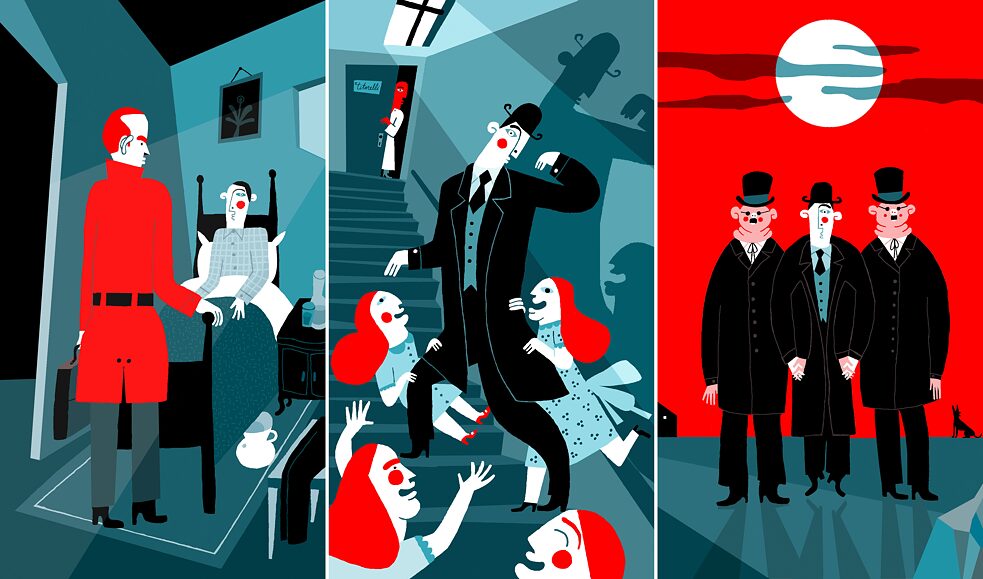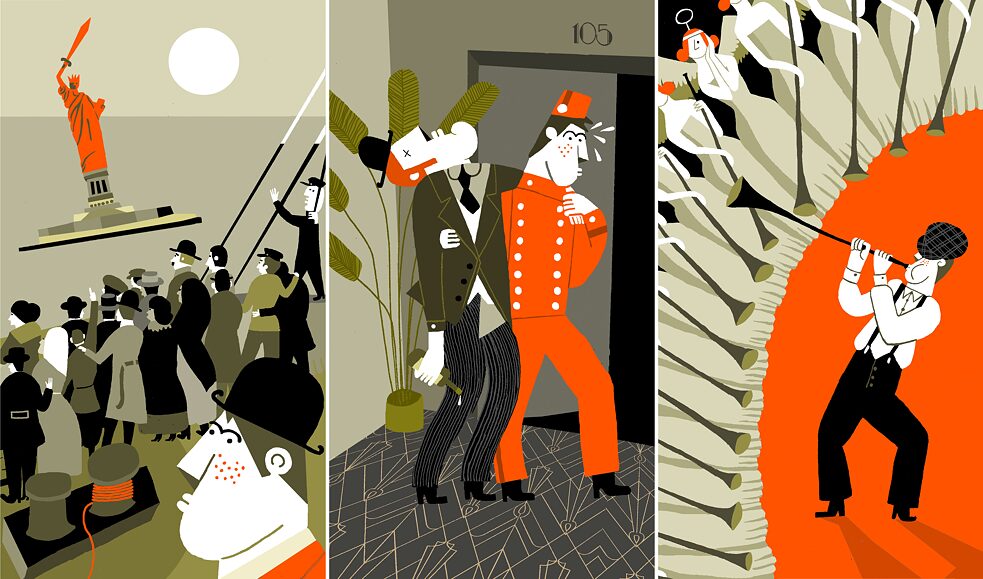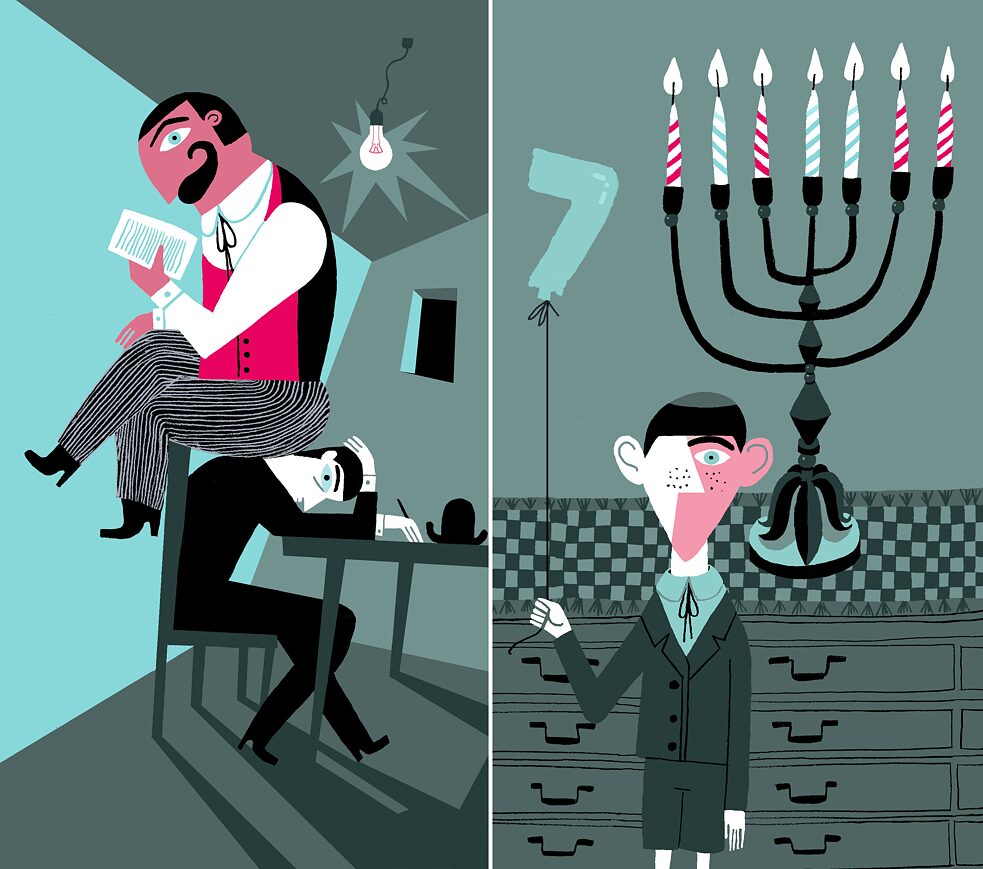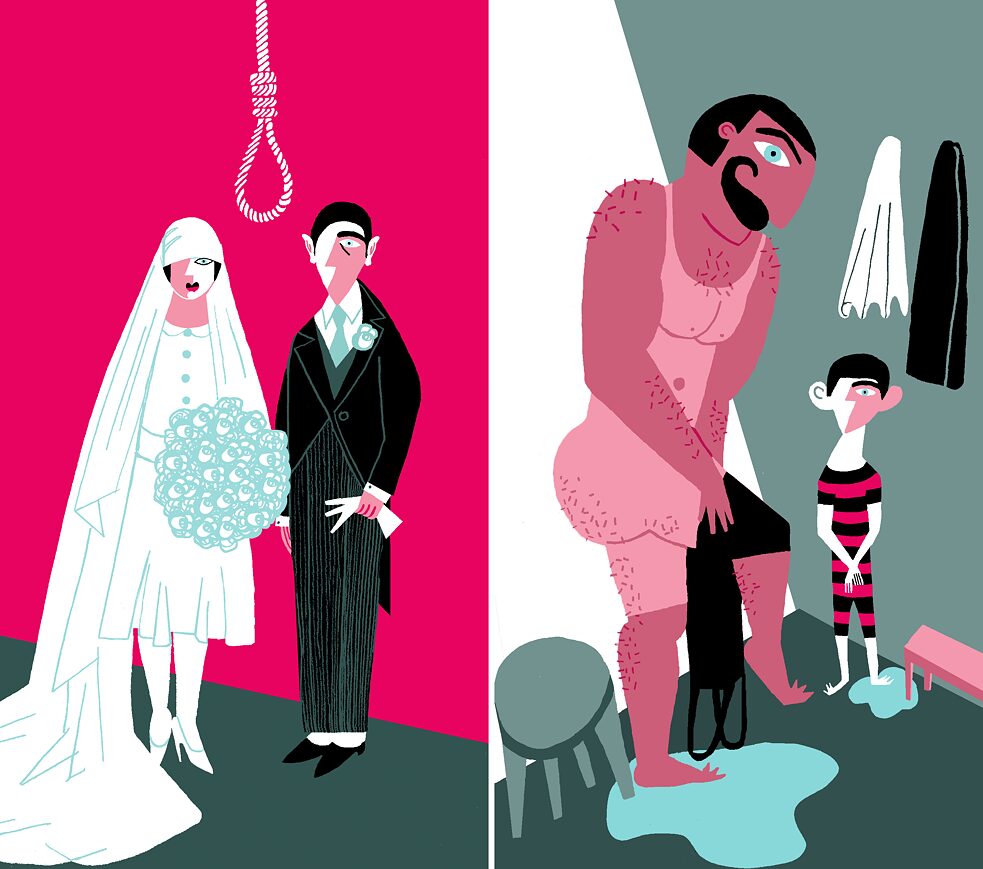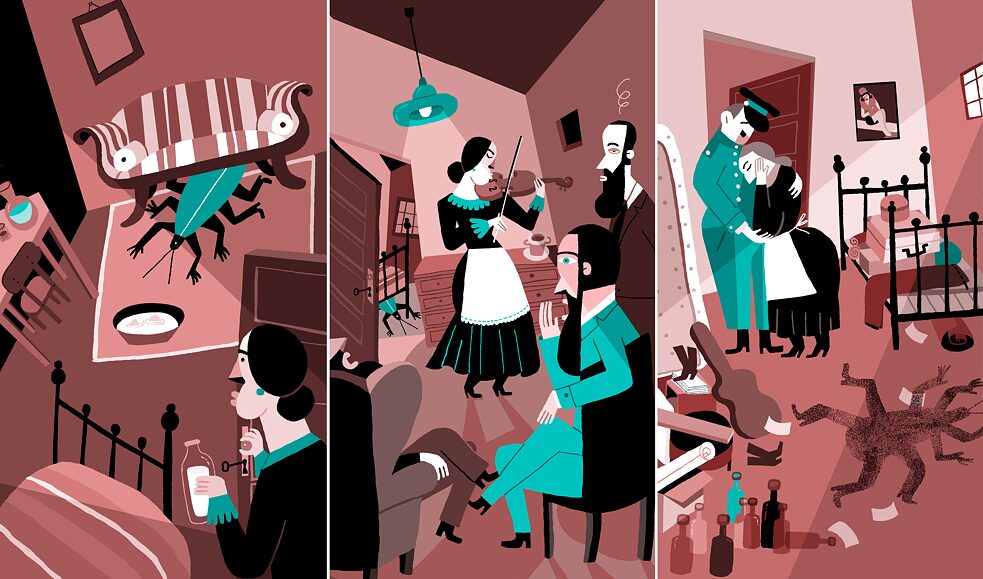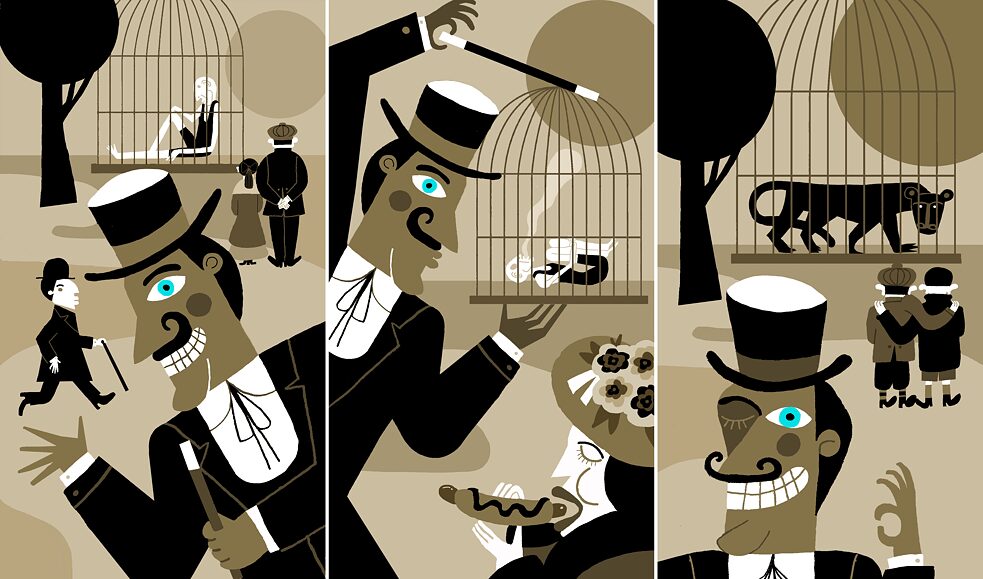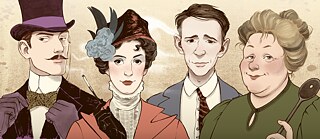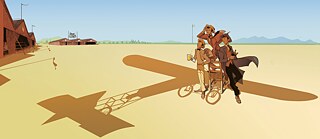Roberto Maján Kafka as a picture book
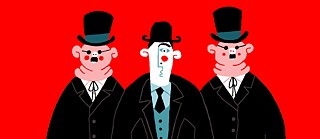
“The Trial”, “The Metamorphosis” or “Amerika” – Franz Kafka came up with such beautiful language in all his novels and short stories that readers instantly form the most magnificent images in their minds while enjoying the books. Artist Roberto Maján from Madrid has captured these pictures on paper for you. Have fun!
“The Trial” – a questionable arrest
Der Process (The Trial) is one of the novels by Franz Kafka that remained unfinished and were only published posthumously after the author’s death. On the left-hand picture you can see how the protagonist, Joseph K., experiences an unpleasant surprise on the morning of his 30th birthday: without having even the slightest idea why, he is arrested by two dodgy characters, Franz and Willem. The pair have come from an “authority”. Which one remains a mystery to Joseph K. Who’s that peeping out of the door of his attic apartment in the middle picture – it’s Titorelli the artist. He doesn’t pay rent, but has to live with an endless stream of girls going in and out of his home whenever they like. Finally in the right-hand image Roberto has depicted the novel’s gruesome end: exactly a year after his arrest, Joseph K. is taken by two men in frock coats and top hats to a quarry, where he is executed.“The Man Who Disappeared”
Like Der Process, the novel Amerika, which was later published as Der Verschollene (The Man Who Disappeared), remained unfinished. The protagonist here is called Karl Roßmann. He gets a servant woman pregnant, and his parents send him to the USA. The picture on the left shows his ship sailing towards the Statue of Liberty and docking in the port of New York City. At first a rich uncle takes care of him, but he soon abandons Karl. Karl finds a job as a liftboy in the Hotel Occidental, but his dodgy mate Robinson (centre picture) turns up – blind drunk – and Karl is fired. The third scene on the right is set in Oklahoma (or as Kafka writes: Oklahama). The entire town is a theatre, and women in angel costumes blow their trumpets.“Letter to my Father” – never sent
Franz Kafka wrote Brief an den Vater (Letter to my Father) in 1919 and never sent it. Franz Kafka’s relationship with his father was very difficult. The picture on the left shows how Franz experienced his father: as overpowering and oppressive; a brute, butcher by trade, who had no time for his son’s literary ambitions. On the right-hand picture, Roberto depicts a young Franz on his seventh birthday. Behind him are his birthday candles in a seven-branched candelabra, the menorah – whereby Roberto is referring to the Kafka family’s Jewish faith – like the writing this is a bone of contention between father and son.It is assumed that Franz Kafka’s engagement to Julie Wohryzeck might have been what triggered him to write the letter to his father. The thing is, his father was not amused by the engagement because he didn’t think it was befitting of his status. And indeed the marriage never happened, but this was less to do with his father and more because of Franz himself, who had an extremely ambivalent relationship with the concept of marriage, having been engaged three times but never married. Apparently the father advised Franz when he was still really young to go and have a good time at the brothel. Franz was extremely uncomfortable with the idea.
Waking up as a bug: “The Metamorphosis”
In the story Die Verwandlung (The Metamorphosis) written in 1912, Gregor Samsa finds one morning that he has transformed into a “monstrous verminous bug”. In the picture on the left, his sister is bringing him some milk to keep his strength up. As a human he enjoyed drinking milk, however in his current state he no longer likes the taste. Gregor’s sister, whose name is Grete, plays violin so beautifully that Gregor peeps through his bedroom door into the living room to listen better. The three lodgers see him (centre picture) and go completely crazy. Roberto has drawn the end of the story in the right-hand picture: the insect is dead, Gregor has disappeared, and after a brief shock Grete and their parents are quite relieved and go on a trip to the Prague countryside.“A Hunger Artist“ – starvation as an art form
The art of the hunger artist is to starve. In the left-hand picture, Roberto has depicted the artist in his cage with his impresario, who promotes the attraction – eating nothing at all, not even a crumb – to the audience. The audience is enthusiastic to begin with, but they progressively lose interest in watching the artist starving – as seen in the middle picture. In the end he starves himself to death, and a panther takes his place in the cage.Many thanks to Roberto Maján for the fantastic Kafka picture stories. Johannes von Stritzky of the Goethe-Institut Madrid identified Roberto as a huge Kafka fan and brilliant illustrator, and he and Roberto selected the novels and short stories together. Verena Hütter wrote the texts to accompany the pictures.
